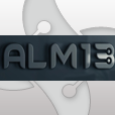Windows Installer Rollback
Is there a way to save the Rollback State of an application after the install completes?
0 Comments
[ + ] Show comments
Answers (8)
Please log in to answer
Posted by:
jmcfadyen
17 years ago
Posted by:
jmcfadyen
17 years ago
Posted by:
Tone
17 years ago
Posted by:
jmcfadyen
17 years ago
problem with that is you would of lost the backed up files.
part of the costing phase backs up any files which are targeted for replacement, the RBF files reference those backed up files.
when installation is completed those files are removed. you would also need to back them up as well for the rbf to work.
part of the costing phase backs up any files which are targeted for replacement, the RBF files reference those backed up files.
when installation is completed those files are removed. you would also need to back them up as well for the rbf to work.
Posted by:
bbernius
17 years ago
Thanks for the feedback. Not too sure if the rollback would work in this case. I was hoping there was a way to leave the rollback data on the machine after the installation was complete. I have an installation that has multiple MSI installing from a wrapper. If the first 5 complete successful and the 6th fails, I cant restore to the original machine state.
Thanks again for all the help
Thanks again for all the help
Posted by:
jmcfadyen
17 years ago
ok in that case you can determine the return code of each of the installations, where you find one has not returned a 0 you can execute an uninstall on the previous items.
to check the return code it is quite simple
intRet = objShell.Run "msiexec /i <path to your msi> /qb-"
if intRet <> 0 then
for each install in installs
objShell.run "msiexec.exe /x <path to your msi>"
next
end if
something like that could help.
to check the return code it is quite simple
intRet = objShell.Run "msiexec /i <path to your msi> /qb-"
if intRet <> 0 then
for each install in installs
objShell.run "msiexec.exe /x <path to your msi>"
next
end if
something like that could help.
Posted by:
Tone
17 years ago
ORIGINAL: jmcfadyen
problem with that is you would of lost the backed up files.
part of the costing phase backs up any files which are targeted for replacement, the RBF files reference those backed up files.
when installation is completed those files are removed. you would also need to back them up as well for the rbf to work.
I was thinking along the lines of copying the rbf files before the success flag was returned, but looking at this a bit more and it seems that only files that are marked for removal rather than replacement are backed up under config.msi is this correct?
Posted by:
Tone
17 years ago
ORIGINAL: jmcfadyen
ok in that case you can determine the return code of each of the installations, where you find one has not returned a 0 you can execute an uninstall on the previous items.
to check the return code it is quite simple
intRet = objShell.Run "msiexec /i <path to your msi> /qb-"
if intRet <> 0 then
for each install in installs
objShell.run "msiexec.exe /x <path to your msi>"
next
end if
something like that could help.
Problem with that is a successful installation doesn’t always return 0, one example is a reboot would return 1641 or 3010
 Rating comments in this legacy AppDeploy message board thread won't reorder them,
Rating comments in this legacy AppDeploy message board thread won't reorder them,so that the conversation will remain readable.




